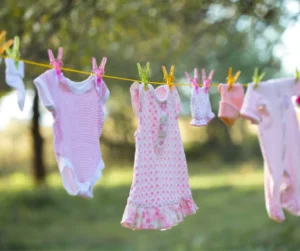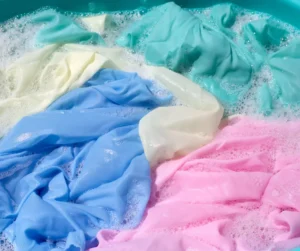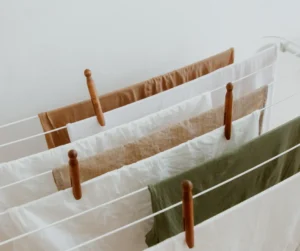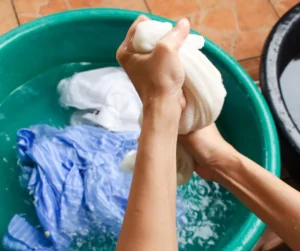In the beauty industry, hygiene is paramount. Clients expect not only exceptional service but also a clean and safe environment. Beauty parlor laundry plays a crucial role in achieving this standard. From towels to capes, every item used in your salon must be meticulously cleaned and maintained.

Here are seven essential tips for ensuring your salon’s laundry practices uphold the highest hygiene standards.
-
Wash Towels and Linens After Each Use
One of the simplest yet most effective ways to maintain hygiene is to wash all towels, capes, and linens after every use. This practice prevents the spread of bacteria, fungi, and odors. Make it a standard procedure in your salon to have fresh linens ready for each client, ensuring they receive a clean experience every time they visit.
-
Choose the Right Detergent
Not all detergents are created equal. Invest in a high-quality detergent that is specifically formulated for salon laundry. Look for options that effectively tackle stains and odors while being gentle on fabrics. A good detergent not only cleans but also helps maintain the integrity of your towels and linens over time.
-
Separate Laundry by Type
To prevent cross-contamination, it’s essential to sort your laundry into different categories. Separate towels from capes and salon linens to ensure each type receives the appropriate care. This practice also allows for more efficient washing cycles, as different items may require varying temperatures or wash settings.
-
Regularly Maintain Your Washing Machines
Your washing machines need care too. Regular maintenance is vital for preventing mold and bacteria buildup. Schedule a cleaning cycle with vinegar or a specialized washing machine cleaner at least once a month. This not only keeps your machines in top condition but also ensures that the items you wash are free from any lingering odors or contaminants.
-
Implement a Drying Protocol
After washing, it’s crucial to ensure that all items are thoroughly dried before use. Damp fabrics can create an environment for bacteria and odors to thrive. High-temperature drying can help eliminate any remaining germs, so invest in quality dryers that can handle the demands of salon laundry.
-
Educate Your Staff
Hygiene practices should be a team effort. Educate your staff about the importance of beauty parlor laundry hygiene. Provide training on proper washing, drying, and handling of linens and towels. A knowledgeable team will be more mindful of hygiene practices and contribute to a cleaner salon environment.
-
Use Color-Coded Laundry Bins
To streamline your laundry process, consider using color-coded bins for different types of laundry. For example, use one color for towels, another for capes, and so on. This simple visual cue helps staff quickly identify where to place items, reducing the risk of cross-contamination and improving overall efficiency.
Conclusion
Maintaining hygiene in your beauty parlor is crucial for client satisfaction and safety. By implementing these seven tips for beauty parlor laundry, you can create a clean and welcoming atmosphere that enhances the overall client experience. Remember, a commitment to hygiene not only protects your clients but also elevates your salon’s reputation in the competitive beauty industry.





